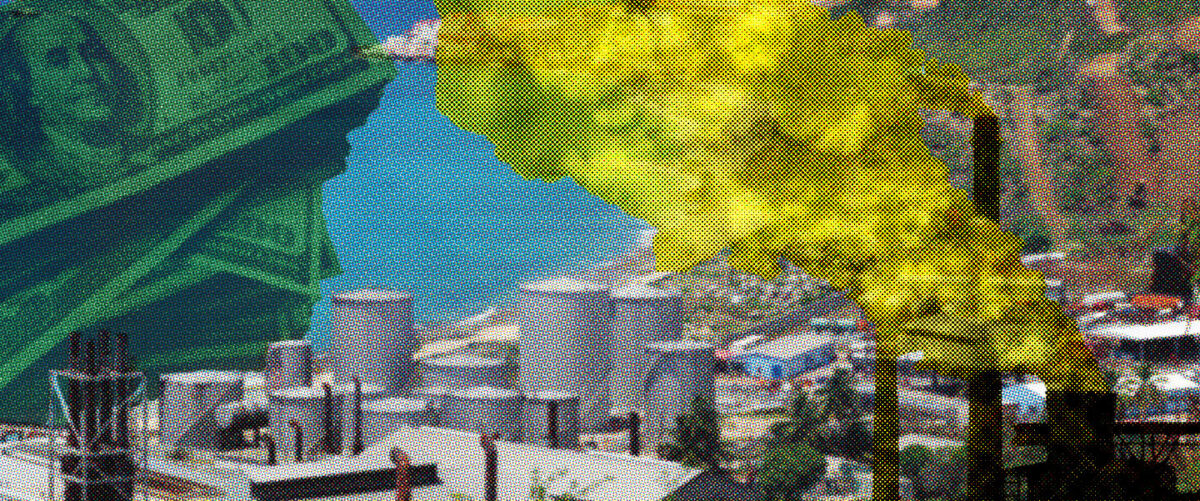5 Reasons Why Desalination Isn’t Worth It
Published Apr 27, 2023

More cities are planning desalination projects to respond to water scarcity. But these projects come with overwhelming downsides — and we have plenty of better options.
We know that clean, affordable water — essential for life — is a human right. We want to make sure that everyone has access to water when they need it. So as drought drains our reservoirs and climate-fuelled natural disasters threaten our water supplies, it’s no wonder we’re worried about having enough to drink.
In response, governments and companies are turning to the ocean. Drought-stricken areas are seeing more proposals for ocean desalination projects, which would make ocean water drinkable by removing the salt.
However, ocean desalination is not a solution to the threat of water shortages. It’s expensive and environmentally destructive. Moreover, its downsides will — like so many other greenwashed technologies — impact already struggling communities the hardest.
To ensure drinking water for all, we need to rein in corporate water abusers and invest in sustainable water resilience strategies. That doesn’t include desalination. Here are 5 reasons why ocean desalination is not worth it:
1. Desalination Will Cost Us Dearly on Our Water Bills
Desalinated water is way more expensive than the regular treated water most of us currently drink. For example, a desalination plant in Carlsbad, CA pumps out water that’s 73% more expensive than San Diego County’s current water supply.
Meanwhile, as a better alternative, other cities have captured and treated rainwater to boost their water supply. This practice costs about 5 times less than desalination.
Moreover, desalination’s high costs are disproportionately borne by low-income families, who spend more of their income on utilities. In many places, desalination would make families choose between paying their water bill and buying groceries.
Learn more about desalination in our latest fact sheet, “Ocean Desalination: A Problematic Response to Water Scarcity.”
2. Desalination Could Take Our Water Out of Public Hands
Many of the projects proposed so far have been tied to privatization contracts. But private control drives up costs and perpetuates inequality.
For example, in 2015, the desalination company Poseidon began operations in its plant in Carlsbad. From 2015–2018, communities that paid for desalinated water saw 17% higher water rates. As a result, by 2018, as many as 62% of low-income folks in San Diego lived in areas with unaffordable water bills.
To make matters worse, these desalination projects often come with decades-long contracts. Local water wholesalers make these contracts even though they know about the high costs and regulatory requirements. Nevertheless, they force the projects through because the contracts give them decades of guaranteed business.
These private-led efforts bypass community needs and input, and they wrest control of the water supply from community hands. Just like in regular privatized water systems, this means less transparency and accountability to ratepayers.
3. Desalination Is Terrible for Our Oceans
Desalination creates an extremely salty byproduct called brine, the mixture of salt and particles left over after the desalination process. In most desalination processes, each liter of potable water results in 1.5 liters of brine.
This brine is nasty stuff. It’s often polluted with chlorine and copper, as well as other chemicals used in desalination.
Desalination plants commonly pump brine back into the ocean. But brine can create oxygen-less layers in the water and cause deadly ocean acidification. What’s more, it’s pumped into the sea at high temperatures, which are also harmful to marine life.
4. Desalination Emits A Lot of Climate Pollution
Desalination tech needs a lot of energy to run. Right now, nearly half of the energy fuelling desalination comes from fossil fuel-powered power plants.
The climate pollution that comes from powering a single desalination plant for a year could equal anywhere from 2,500 to 52,000 additional cars on the road. The Carlsbad desalination plant uses enough electricity to power 35 small towns.
For that reason, the Intergovernmental Panel on Climate Change has warned that desalination is “maladaptive.” Its energy tradeoffs could lessen our ability to adapt to climate change in the future.
Some desalination plants claim to offset their energy costs with hydropower, but this only covers a small portion of their actual energy needs. For example, the Carlsbad plant only offsets around 30% of its climate pollution by capturing hydropower.
5. Desalination Imposes High Costs on Already-Burdened Communities
The California Coastal Commission recently approved a desalination facility in Marina, CA. This city’s population is a third low-income, already burdened by a landfill, sewage plant, and Superfund site.
Outrageously, Marina residents will see no benefits from the plant. The desalinated water will go to residents and businesses in nearby Pacific Grove and Pebble Beach, which are wealthier and whiter communities.
Huntington Beach, CA, faces its own threat of a desalination plant. It’s been sited in a part of the city with poverty levels much higher than those in the city’s wealthy urban core.
Homes in this area, called a “toxic triangle,” are already burdened with multiple landfills and power plants. Desalination would add to the problems, especially by increasing the power demands, which would inflict greater air pollution on nearby communities.
We Have Way Better Ways of Addressing Water Scarcity
Desalination is a mere distraction from tackling the real source of our water problems. Every year, Big Ag and Big Oil waste billions of gallons of water to boost their profits. For instance, thirsty crops like alfalfa feed cattle in factory farms; meanwhile, frackers pollute drinking aquifers with their wastewater.
We can significantly lessen our water woes by stopping these corporate water abuses.
At the same time, we have so many water management strategies that are better for people and the planet. These strategies are cheaper and more efficient — yet they haven’t been pursued to their greatest extent.
Water conservation practices can lower water bills and reduce the amount of water we use, which lessens pressure on supplies. If we invest in things like green infrastructure and fixing and upgrading our aging pipe systems, we will need less water. That will not only conserve our water supplies; it’ll save money and keep water in public hands.
Instead of looking to techno-fixes, we need to look at how we’re already using water. There are so many better options than wasteful, costly desalination.
We can do critical research like this with supporters like you!


FACTORY FARMS MAKE US SICK
Make a gift to ban factory farms ~and have it matched $2-to-$1!
Enjoyed this article?
Sign up for updates.
TO TOP


